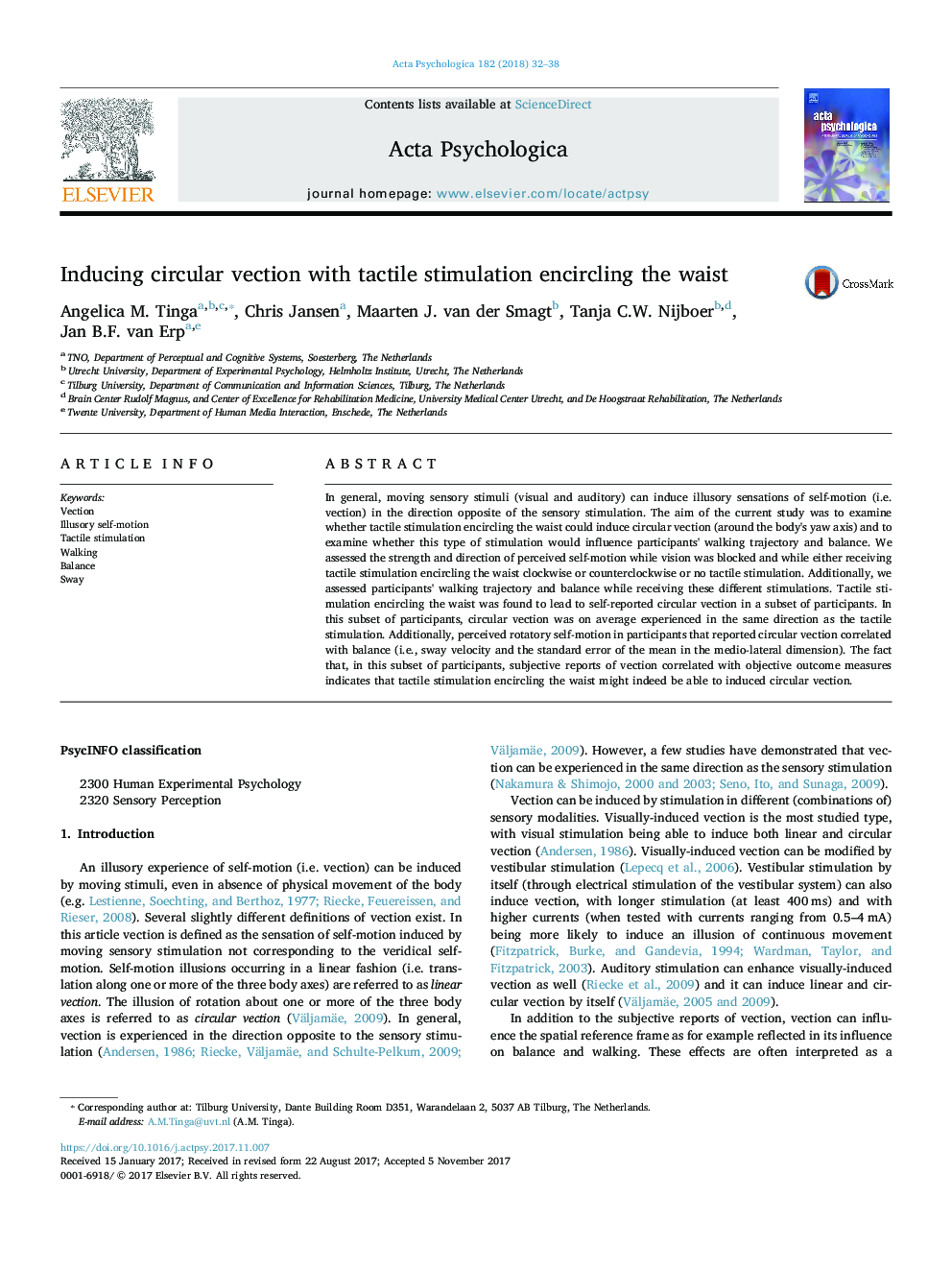| Article ID | Journal | Published Year | Pages | File Type |
|---|---|---|---|---|
| 7276849 | Acta Psychologica | 2018 | 7 Pages |
Abstract
In general, moving sensory stimuli (visual and auditory) can induce illusory sensations of self-motion (i.e. vection) in the direction opposite of the sensory stimulation. The aim of the current study was to examine whether tactile stimulation encircling the waist could induce circular vection (around the body's yaw axis) and to examine whether this type of stimulation would influence participants' walking trajectory and balance. We assessed the strength and direction of perceived self-motion while vision was blocked and while either receiving tactile stimulation encircling the waist clockwise or counterclockwise or no tactile stimulation. Additionally, we assessed participants' walking trajectory and balance while receiving these different stimulations. Tactile stimulation encircling the waist was found to lead to self-reported circular vection in a subset of participants. In this subset of participants, circular vection was on average experienced in the same direction as the tactile stimulation. Additionally, perceived rotatory self-motion in participants that reported circular vection correlated with balance (i.e., sway velocity and the standard error of the mean in the medio-lateral dimension). The fact that, in this subset of participants, subjective reports of vection correlated with objective outcome measures indicates that tactile stimulation encircling the waist might indeed be able to induced circular vection.
Related Topics
Life Sciences
Neuroscience
Cognitive Neuroscience
Authors
Angelica M. Tinga, Chris Jansen, Maarten J. van der Smagt, Tanja C.W. Nijboer, Jan B.F. van Erp,
